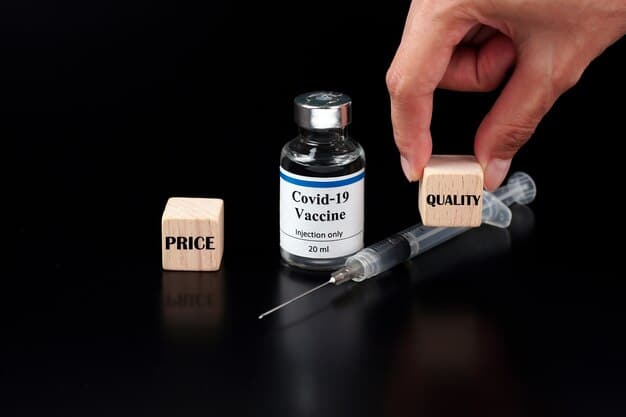Vaccination stands as one of the most significant medical innovations in human history. It has been instrumental in saving countless lives, preventing the spread of deadly diseases, and improving public health worldwide. From its humble beginnings to the modern era of complex vaccines, the history of vaccination showcases humanity’s perseverance in the face of infectious diseases.
Origins of Vaccination
The roots of vaccination date back to ancient civilizations. In China and India, around 1,000 years ago, people practiced a rudimentary form of vaccination called variolation. This involved deliberately exposing individuals to small doses of the smallpox virus to build immunity. While this practice had some success, it was far from foolproof and often caused severe reactions.
The real breakthrough came in 1796, when Edward Jenner, an English physician, discovered the power of vaccination. Jenner observed that milkmaids who had contracted cowpox, a mild disease, were immune to smallpox. He hypothesized that exposure to cowpox could protect individuals from smallpox. Jenner tested this theory by inoculating a young boy with material from a cowpox sore. The boy developed a mild illness but was later immune to smallpox. This marked the birth of the first vaccine, and Jenner’s work laid the foundation for modern immunology.
The Growth of Vaccination

Jenner’s discovery revolutionized medicine, but it was only the beginning of a long journey toward comprehensive vaccination programs. In the 19th and early 20th centuries, scientists like Louis Pasteur and Robert Koch advanced our understanding of pathogens and developed vaccines for other diseases.
Pasteur, a French microbiologist, is credited with creating vaccines for rabies and anthrax. His work on pasteurization, which involves heating liquids to kill harmful microorganisms, further established the scientific basis for preventing infectious diseases. The development of these vaccines saved millions of lives and laid the groundwork for the creation of vaccines for diseases such as tuberculosis, diphtheria, and tetanus.
The Golden Age of Vaccines
The 20th century witnessed an explosion of vaccine development. The development of vaccines for polio, measles, mumps, rubella, and diphtheria led to a dramatic reduction in the incidence of these diseases worldwide. The polio vaccine, developed by Jonas Salk in 1955, was one of the most notable successes. Salk’s inactivated polio vaccine (IPV) paved the way for the eventual near-eradication of polio, a disease that once caused widespread paralysis and death.
In addition to these landmark vaccines, the development of vaccines for influenza, hepatitis, and human papillomavirus (HPV) transformed the way the world fought infectious diseases. Vaccination campaigns led to the near-elimination of smallpox in the 1980s and have significantly reduced the impact of diseases like measles and tetanus.
The Era of Modern Vaccines
In recent decades, the focus of vaccination has shifted toward creating more sophisticated vaccines. Advancements in genetic research and biotechnology have led to the development of vaccines using messenger RNA (mRNA) technology. The COVID-19 vaccines, particularly those created by Pfizer-BioNTech and Moderna, represent the cutting edge of vaccine science. These vaccines have proven highly effective in preventing COVID-19 and have opened the door to new possibilities for combating other viral diseases.
The future of vaccination continues to evolve with the development of universal vaccines, vaccines for diseases that have eluded treatment for centuries, and vaccines tailored to specific genetic profiles.
Conclusion
The history of vaccination is a testament to human ingenuity and resilience. From the discovery of the smallpox vaccine by Edward Jenner to the cutting-edge mRNA vaccines of today, the journey has been long and filled with challenges. Vaccines have proven to be a powerful tool in reducing illness, preventing death, and improving global health. As we continue to develop new vaccines and build on past successes, the future holds the promise of eradicating even more diseases, safeguarding generations to come.
Q. What is the history of vaccination?
The history of vaccination dates back to ancient civilizations, where variolation was practiced. Edward Jenner’s discovery of the smallpox vaccine in 1796 is considered the start of modern vaccination practices, leading to the development of many other vaccines over the centuries.
Q. How did Edward Jenner contribute to the development of vaccines?
Edward Jenner’s discovery of the smallpox vaccine in 1796 revolutionized medicine. He demonstrated that exposure to cowpox could protect individuals from smallpox, laying the foundation for vaccination.
Q. What were some major milestones in vaccine development?
Key milestones include the development of the polio vaccine by Jonas Salk in 1955, the eradication of smallpox in the 1980s, and the recent COVID-19 vaccines, which have changed the landscape of vaccine science with mRNA technology.
Q. How do modern vaccines work?
Modern vaccines, including mRNA vaccines, work by stimulating the immune system to recognize and fight specific pathogens. They help the body build immunity without causing the disease.
Q. Why is vaccination important for public health?
Vaccination is crucial for public health as it helps prevent the spread of infectious diseases, protects vulnerable populations, and can lead to the eradication of diseases, as seen with smallpox.

